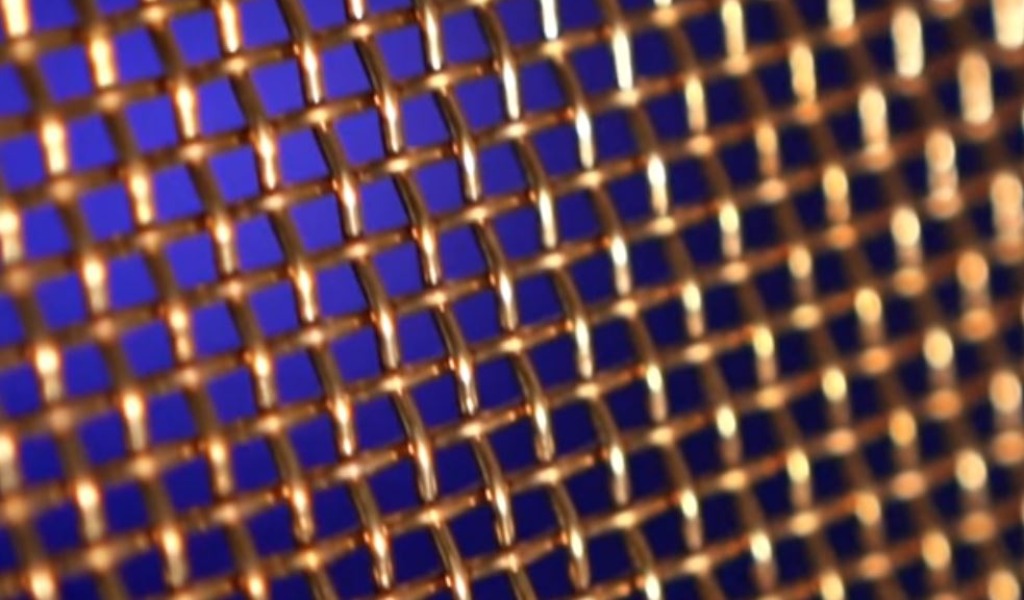Understanding EMI Shielding: Definition, Function, and Applications
In today’s tech-driven world, electronic devices are more advanced, and more sensitive than ever. But with greater performance comes a greater risk of electromagnetic interference (EMI). Whether it’s a signal glitch, performance drop, or complete device failure, EMI can quietly disrupt the functionality of even the most sophisticated systems.
The good news? These risks can be controlled.
EMI shielding is a critical design element that prevents external electromagnetic waves from interfering with sensitive electronics, and vice versa. It’s not just for aerospace or military tech; from smartphones to medical devices to industrial control systems, nearly every high-performance device depends on effective shielding to operate reliably.
At W.S. Tyler, we’re committed to helping create cleaner, safer, and more efficient systems through precision-engineered wire mesh solutions backed by over 150 years of manufacturing expertise. When it comes to EMI shielding, our mesh delivers the performance and consistency today’s applications demand.
In this article, we’ll define what EMI shielding is, explore where and why it’s used, break down how it functions, and highlight what effective shielding looks like in real-world applications.
What Is EMI Shielding and Why It Matters
Electromagnetic interference (EMI) occurs when unwanted signals disrupt the performance of an electronic device. These signals can come from nearby equipment, power lines, wireless transmitters, or even internal components.
In environments where performance and reliability are non-negotiable, this interference can lead to data corruption, system instability, or complete failure.
EMI shielding refers to the practice of enclosing sensitive components in a conductive material that blocks or redirects electromagnetic waves. By absorbing and reflecting this interference, shielding ensures that only the intended signals reach the device, maintaining signal clarity and system integrity.

Without proper EMI shielding, devices are left vulnerable to a range of issues, from minor performance glitches to significant safety concerns in critical applications like medical equipment or aerospace navigation systems.
That’s why EMI shielding isn’t just an afterthought in product design, it’s a foundational element in ensuring electronic systems perform as intended, regardless of where or how they operate.
Common Applications That Rely on EMI Shielding
EMI shielding plays a vital role in a wide range of industries, often working behind the scenes to keep systems stable and secure. Wherever sensitive electronic components operate in close proximity to potential sources of interference, shielding becomes more than a luxury, it becomes a necessity.
In aerospace and defense, EMI shielding is critical for maintaining the integrity of communication systems, radar equipment, and flight control systems. Even a momentary lapse in signal clarity can have serious consequences, which is why these industries demand robust, high-performance shielding solutions.
Medical devices, such as MRI machines, infusion pumps, and diagnostic equipment, rely on clean, interference-free signals to function properly. EMI shielding ensures that these devices deliver accurate results and remain compliant with strict safety regulations.
In the automotive sector, modern vehicles house an ever-growing number of electronic systems, from infotainment and navigation to engine control units and even collision avoidance sensors. EMI shielding helps these machines work in harmony, minimizing the risk of interference-related malfunctions.
Consumer electronics, industrial machinery, telecom infrastructure, and even smart home devices all benefit from EMI shielding. As devices get smaller and more powerful, and as wireless communication becomes more universal, the need for effective shielding continues to grow.
How EMI Shielding Works to Protect Devices
At its core, EMI shielding is all about controlling the electromagnetic environment around a device. It works by creating a barrier which is often made from conductive or magnetic materials that absorbs, reflects, or redirects electromagnetic energy before it can interfere with sensitive internal components.
This shielding barrier can take many forms depending on the application: woven wire mesh, metal enclosures, conductive coatings, or laminated composites. The goal is always the same, to prevent unwanted external signals from entering and internal signals from leaking out.
For example, in a wire mesh application, the conductive metal acts like a Faraday cage, dispersing incoming electromagnetic waves across its surface. This diffuses the energy and prevents it from reaching delicate circuitry.
At the same time, it blocks emissions generated by the device itself, which could otherwise impact neighboring electronics.
Discover why woven wire mesh continues to be the preferred material for electromagnetic shielding. Read more below::
Shielding performance is measured in terms of attenuation, which is how effectively the shield reduces signal strength across different frequencies. Higher attenuation means better protection, especially in environments with strong or variable EMI sources.
Ultimately, EMI shielding ensures that devices operate in stable, predictable conditions. By controlling electromagnetic exposure, it helps prevent data corruption, signal drift, operational glitches, and even total system failure.
What Effective EMI Shielding Looks Like
Not all EMI shielding is created equal. While many materials can block electromagnetic waves to some extent, truly effective shielding requires a balance of conductivity, coverage, durability, and compatibility with the device’s environment.
Effective EMI shielding starts with material choice. Metals like copper, aluminum, and stainless steel are commonly used because of their excellent conductivity and ability to reflect and absorb EMI.
In many high-precision applications, woven wire mesh made from these materials is favored for its flexibility, airflow compatibility, and form-fitting structure.
But material alone isn’t enough, as design matters too. Proper grounding, complete enclosure, and consistent surface contact are all essential. Gaps, loose fittings, or poorly integrated seals can turn even a high-grade shield into a vulnerability.
That’s why shielding solutions must be tailored to the specific frequency range, device layout, and EMI sources in question.
Durability is another critical factor. In environments with vibration, temperature fluctuations, or corrosive conditions, shielding must maintain integrity over time. Wire mesh, when engineered properly, offers long-lasting structural and EMI protection that withstands repeated use and exposure.
Ultimately, effective shielding doesn’t just block interference as much as it does so without disrupting performance, airflow, and usability. It seamlessly integrates into the system while delivering consistent protection throughout the device’s operational life.
Build Better Systems With the Right Shielding Approach
Effective EMI shielding plays a critical role in the performance, reliability, and compliance of modern electronic systems. Whether you’re protecting sensitive data, minimizing interference, or building devices for high-stakes environments, how you shield matters.
As you evaluate your design needs, consider how your shielding materials, such as woven wire mesh, impact long-term durability and effectiveness. Prioritizing precision and quality at the material level is the first step toward developing smarter, more resilient systems.
With over 150 years of engineering experience, we’ve seen firsthand how choosing the right shielding solutions can streamline product development and reduce costly complications down the road. Our mission is to help you build cleaner, safer, and more reliable systems, starting with the right materials.
Want a deeper look at how woven wire mesh is used for electromagnetic shielding? Read the full breakdown here:
About Dylan Polz
Dylan is a Content Writer with 2 years of experience in marketing and SEO. Passionate about learning and strengthening his writing skills, he is currently expanding his expertise in particle analysis and woven wire mesh technologies. With a strong belief in the power of information to drive positive change, his goal is to develop content that supports cleaner, safer solutions across all industries.



